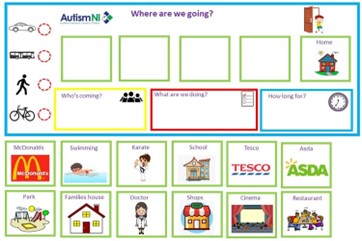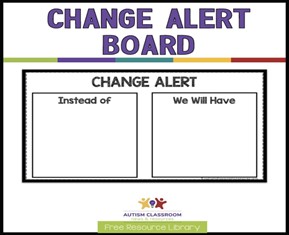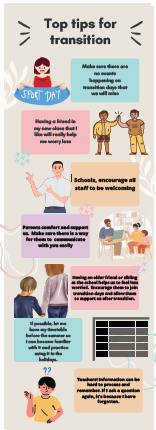Some real positives of change include:
- Allowing us to move forward in life and experience and learn new things
- It can bring more opportunities to improve our quality of life, for example changing jobs to be more flexible to fit around family life
- Overcoming change can make us stronger and help us find change easier to deal with in the future
Some of the changes/transitions we face in life can be big or sudden and harder to deal with. Even if expected and positive, we can struggle with the effects.
Uncertainty about changes and transition can be difficult for everyone but for some people a feeling of uncertainty can be particularly stressful and upsetting.
Difficulties with change and uncertainty are not specific to autism, but research suggests that many autistic people find uncertain situations particularly difficult, and very likely to cause anxiety.
There are numerous types of changes and transition that occur throughout the day, the school term, the year and throughout your life. It is not always the major transitions that can have the most impact on autistic people but all need to be considered and planned for, where possible. At the very least, coping with transition and change needs to be recognised as a potential for increase in stress and anxiety for autistic people and their families.
These changes and feelings of uncertainty may be an addition to other aspects of anxiety for autistic people. For example, having sensory sensitivities and being unsure if these sensory triggers will be part of any new situations. The anxiety over this may make you less able to manage the change and uncertainty.
Some autistic people find uncertainty so stressful and upsetting that they do everything to avoid it, for example refusing school or going to social events.
Here are some useful practical tips in trying to cope with change and uncertainty:
Find out about the change
It might be a new environment, new job role or new rule, but anxiety about such changes could be greatly reduced by finding out exactly what is expected.
- What does the change involve?
- When will it take place?
- If it’s a new teacher at school for example: who are they and when do they start?
Prepare for the change
It may help to prepare yourself for the change by adding the date of the change to a calendar. This may give time to process that the change is going to happen.
As a parent or caregiver, describe the change using clear language and give time for the person to process what is being said. It can also be helpful and supportive to describe the things that will remain the same.
Planners or calendars can be a good way to incorporate the change into your daily routine and by writing it and seeing when the change will happen could help to reduce anxiety and help accept the change.
Use visual support
Visual charts could be used also to describe a change and to help process the new expectation. So for instance a new timetable could be made into a visual chart or a new routine could be put into visual pictures.
You could also look at or show someone a photo of where, what or who they will be going to see. This could be a book of images that may be helpful in knowing what to expect.
Below are a couple of possible visual examples that may help to process and manage the change using visual support:


The Autism Outreach Team Youth Forum have designed the following poster for transitioning between schools:
The Youth Forum is made up of secondary age young people who all have an autism diagnosis. The ideas were generated by the young people and they were involved at all stages of the creative process. It has been shared with all Leicestershire Schools.





